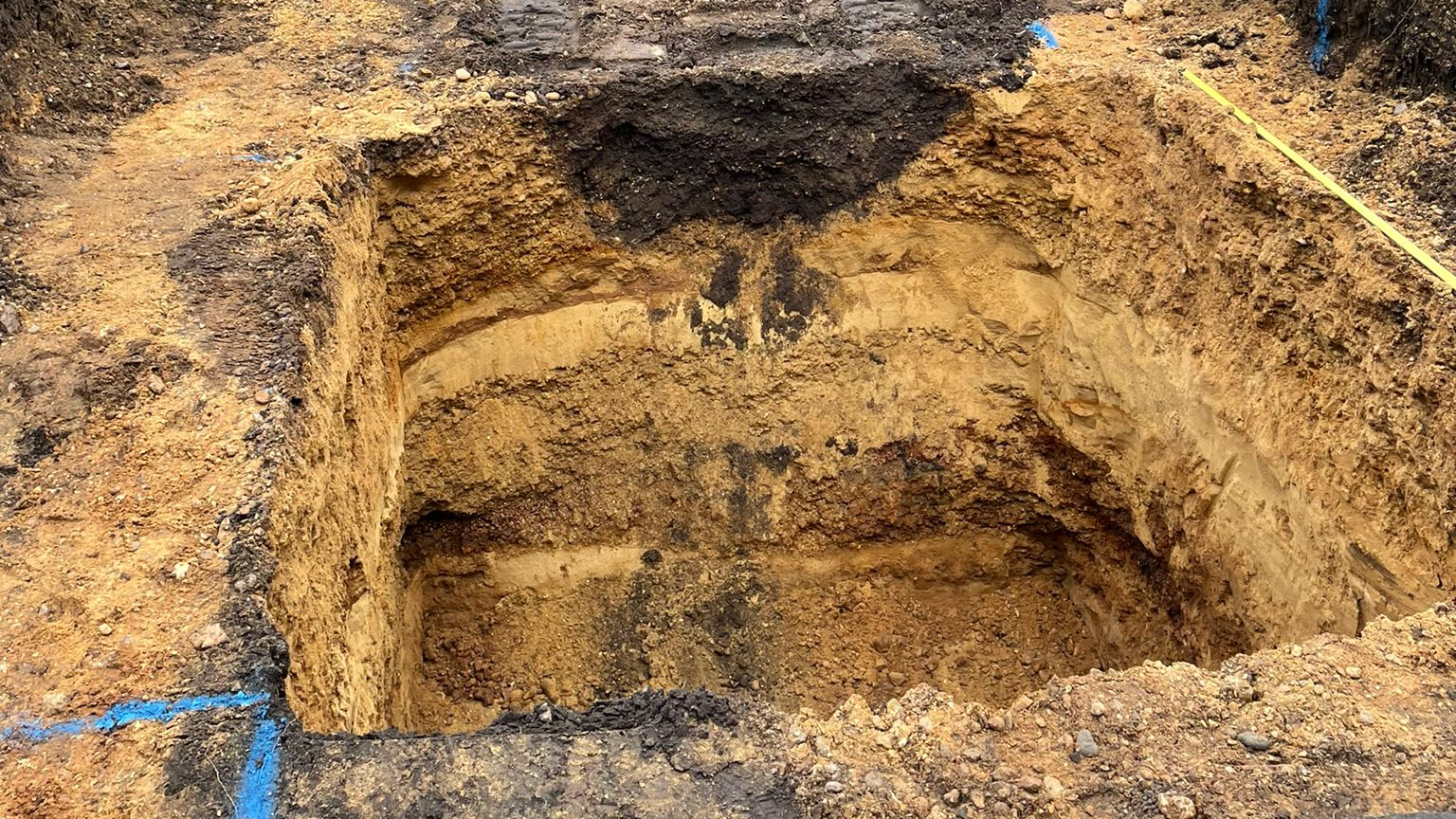If you visit the Garden this month you will be able to see a big change. We have dug a great big hole in the lower lawn. Don’t worry the hole won’t be there for long. We have dug it as part of our work to make the Garden more sustainable.
We will fill this hole with a rainwater collection tank. This tank will collect all the rain that falls onto the roof of the cool fernery. We can then use what is inside the tank to water the plants in the glasshouse. Rainwater is better for a few reasons.
- It is better for the plants because it doesn’t contain chemicals.
- It is better for the environment because it takes less energy to use this water.
- It is better for the Garden because rainwater is free.
The hole will be filled in soon and will then be covered with grass. While it is there, it is a great opportunity to see what is below the Garden’s surface. When you look into the hole you can see that it is made up of lots of layers. These layers show you the history of the garden. Right on the top, there is a good layer of soil, which lets us grow all our wonderful plants. Below this, there are a few different sandy layers, some with small grains of sand and some full of stones. These layers show you that the Garden used to be either part of the river Thames or right next to it. Over thousands of years, the river has moved about, and these different layers give us a clue to how it moved compared to the Garden. The bigger stones come from a time when the Garden was part of the inside bend of the river or when the Garden was part of a floodplain. The small grains of sand come from a time when the garden was part of the banks of a straight part of the river.

